There is something to be said for starting the morning with the scent of freshly baked muffins. How disappointing, then, when the muffins come out dry and hard, rather than moist and delicious. Dry, hard muffins are the usually result of inadequate measuring, a faulty recipe or overmixing -- all solvable issues. Understand the root of potential problems, then take measures to prepare a fresh batch that tastes as good as it smells.
Overmixing
Mixing the batter too much is a common reason for dry, hard muffins. As you mix the batter, the glutens in the flour release and start to tighten. Too much mixing makes glutens proactive, creating a hard, dry muffin. Counteract this by mixing the ingredients only until the dry ingredients are moistened, even if lumps remain. Never mix muffin batter with an electric mixer. Instead, use a wooden or plastic spoon and soft, even strokes; about 10 to 15 should suffice.
Baking
Muffins can quickly burn and dry out in the oven. Baking them too long or at a higher temperature than the recipe calls for creates a tough, crumbly texture. Using a dark, non-stick muffin pan can also lead to overbaking, because these absorb heat faster than other cookware. Instead, use a shiny, well-greased or well-lined muffin pan. Bake them at the temperature listed on your recipe, and check on your muffins throughout the baking process. Insert a toothpick into the center of the muffin about five minutes before the recipe says to remove them. If it comes out clean with a few crumbs attached, they’re ready to remove. You can also tell by pressing lightly on the top of your muffin with your index and middle finger. If the impression springs back slowly, your muffins are ready to remove. If the impression stays, they need to bake longer.
Measuring
Ensure the accuracy of the ratio of wet to dry ingredients. Improper measuring, especially of dry ingredients, can create a hard texture in the end. Measure flour appropriately and level off each measured scoop using a spatula or the flat edge of a butter knife. Use the appropriate liquid measuring cups for the liquids -- cups that are plastic or glass with pouring lips and handles -- and the appropriate measuring cups for dry ingredients.
Altitude
Recipes are based on sea-level atmospheric conditions. At higher altitudes -- typically above 3,500 feet -- air bubbles expand and rise faster than at lower altitudes, which means moisture leaves your muffins faster while baking. Fix this by altering the amount of flour to liquid. Add 1 to 2 tablespoons of additional liquid -- using the liquid already called for in the recipe, such as milk -- for every 1 cup required at altitudes of 3,500 feet or more. Add additional moisture by using brown sugar -- cup for cup -- in place of granulated sugar.
Storing
Even a perfectly baked, moist muffin can turn stale, dry and hard if you store it inappropriately. Once cooled, store baked muffins at room temperature for up to two days in a plastic storage bag or airtight container, or covered with plastic wrap. Wrap excess muffins tightly with plastic wrap or aluminum foil or place them in a heavy-duty freezer bag, then store them in the freezer for six to 12 months at 0 degrees Fahrenheit or below.
Related Articles
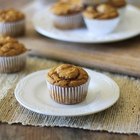
How to Make Pumpkin Muffins

What Causes Cupcakes to Be Dry?

Can I Substitute Rolled Oats for Flour ...

Can I Make Brownies With Confectioner's ...

Why Is My Cake Dry & Crumbly?
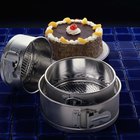
How to Keep Cake Edges From Hardening ...

How to Cook Cheesecake in a Cupcake Pan
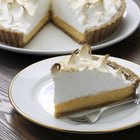
How to Stop a Meringue From Being Sticky
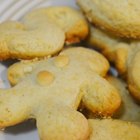
How to Make Butter Sugar Cookies
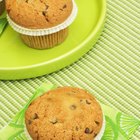
How to Keep Muffins From Going Moldy
How Many Calories are in Pistachio ...
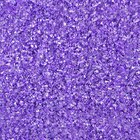
How do I Decorate Muffins With Sugar ...
Easy Banana Bread Recipe

Delicious Homemade Pop Tarts Recipe

Roshco Silicone Bakeware Instructions
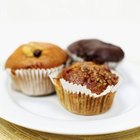
A Butter Substitute for Baking Muffins
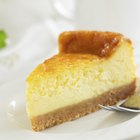
Gluten-Free Cheesecake Nut Crust
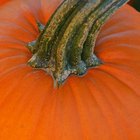
How to Make Pumpkin Bread Moist

How to Bake a Cake: A Step-By-Step Guide
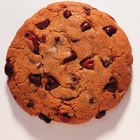
Is Butter or Shortening Better for Soft ...
References
- Mr. Breakfast: Muffin Madness 101
- Quaker Oats: Dry and Crumbly
- On Baking: A Textbook of Baking and Pastry Fundamentals; Sarah Labensky
- U.S. Department of Agriculture: Team Nutrition: Storage Tips
- U.S. Department of Agriculture: Keeping Food Safe During an Emergency
- Taste of Home: Storing Muffins, Biscuits and Scones
Writer Bio
Shailynn Krow began writing professionally in 2002. She has contributed articles on food, weddings, travel, human resources/management and parenting to numerous online and offline publications. Krow holds a Bachelor of Science in psychology from the University of California, Los Angeles and an Associate of Science in pastry arts from the International Culinary Institute of America.